Meet Dave, a seven year old domestic shorthair who loves walks outside! On this blog you will mostly find pictures of Dave's outdoor adventures, as well as various cat care resources and memes. Occasionally Dave might be joined by his younger bengal roommate, Kepler!
Don't wanna be here? Send us removal request.
Text
youtube
I animated a video about my kitty :-)
1K notes
·
View notes
Note
Pre-ordered your book. Described it to some friends and they are hoping for true love. Please enjoy my idiot cat. His name is Larry, but we call him Sir Laurence Oblivier.

you’ve got one of those orange cats that looks almost green
776 notes
·
View notes
Text
Not to brag but my cats are Artists™
[Medium: Claws on rainbow scratchboard]

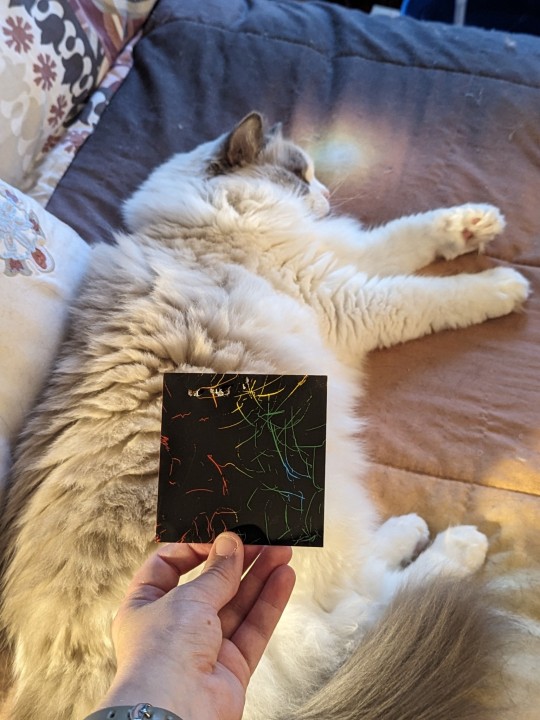
Remi works with a hesitant, erratic violence, creating a piece as light and fluffy as she is, and signing her work by hole-punching it with her teeth.
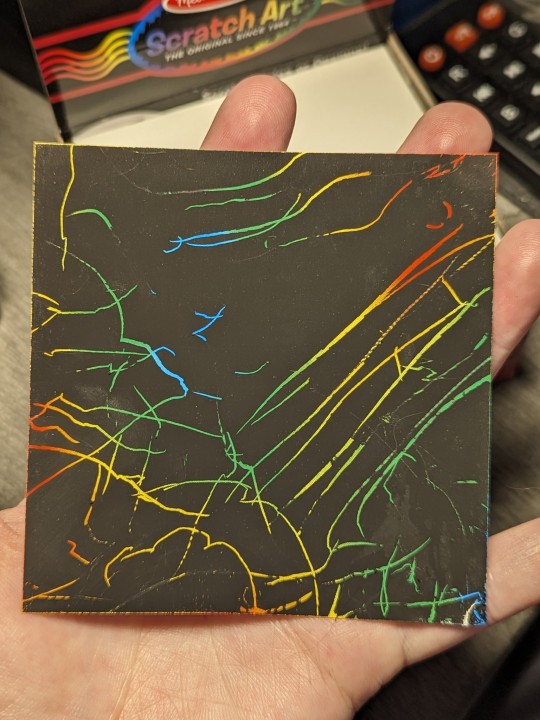
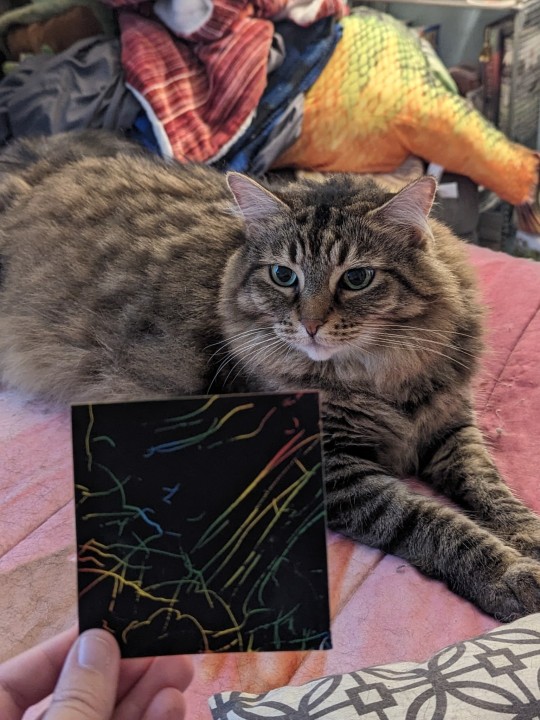
Timmy uses bold, strong lines to evoke some kind of powerful event, echoing his powerful presence and loud voice.
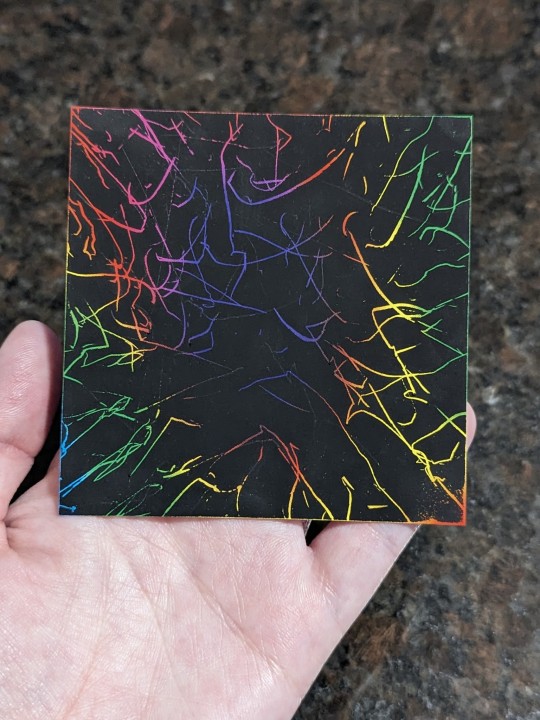
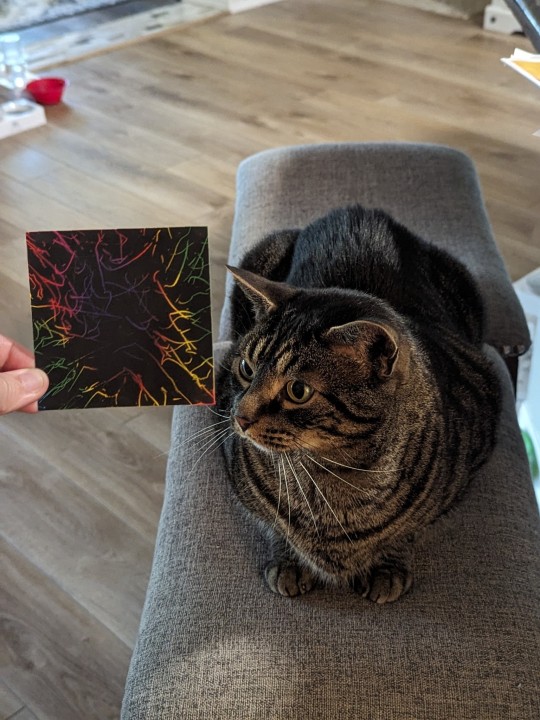
Nubbins, truly inspired, creates a high-energy piece that symbolizes the void where his brain should be, surrounded by chaos and mischief.
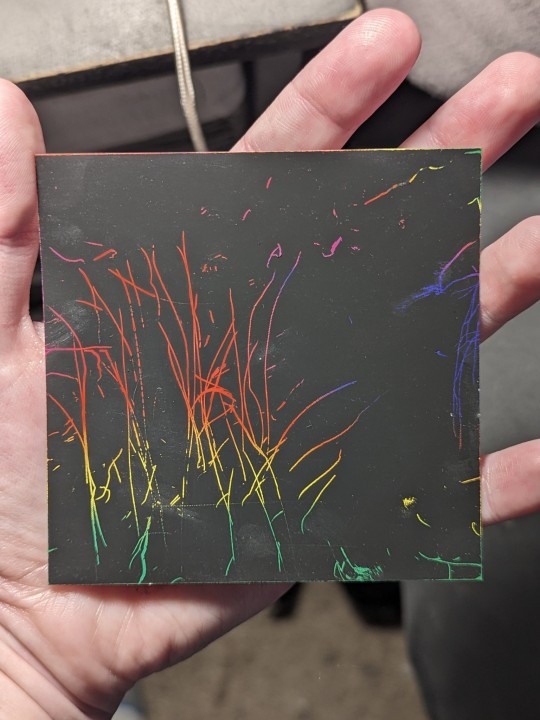
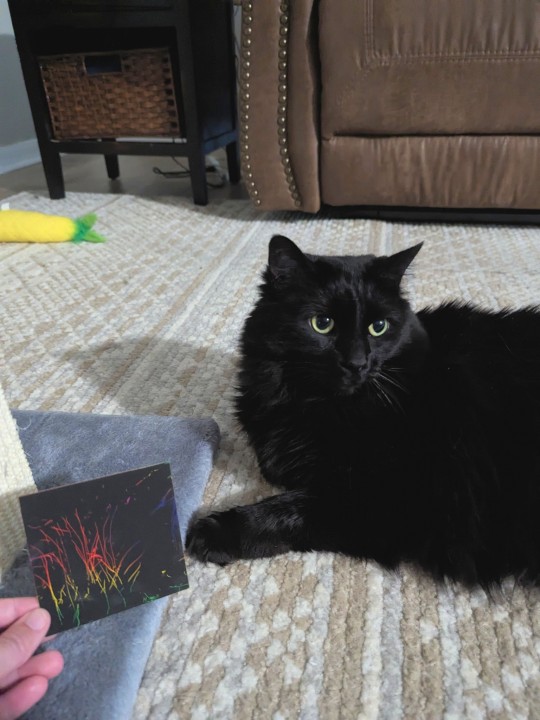
Kona, a reclusive avante garde artist, refused to work with me around. Only in quiet solitude did she create this haunting, introspective work.
44K notes
·
View notes
Text


she fell asleep while trying to bite him
5K notes
·
View notes
Text

Six years of Marigold! Thanks again, @the-adventures-of-dave !
#SIX!!!!!!!!!!!!!#I can’t believe it’s been six years already#time FLIES#I’m so glad she went home with you#absolutely thriving out there#and I love the updates haha#kitten watch
58 notes
·
View notes
Text







Plague of cats everywhere I go around here
1K notes
·
View notes
Text

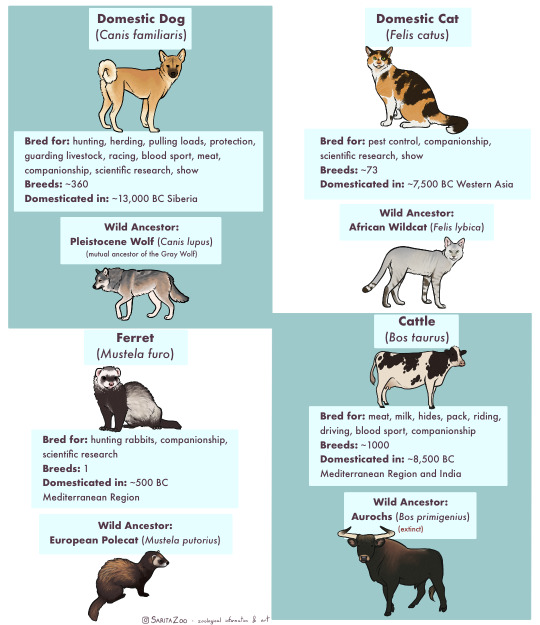


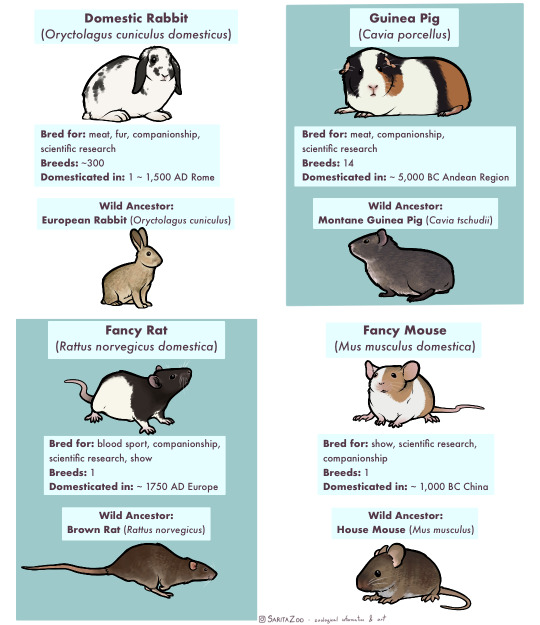
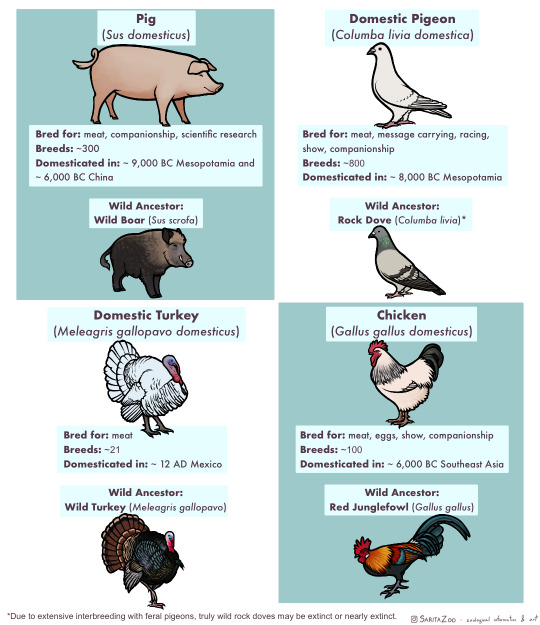
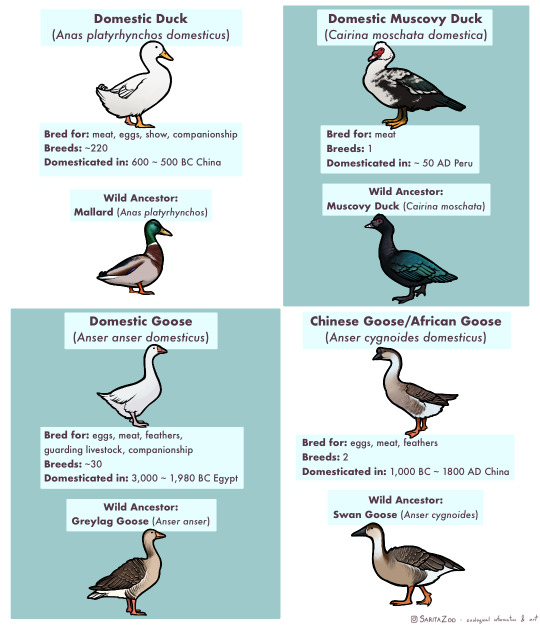
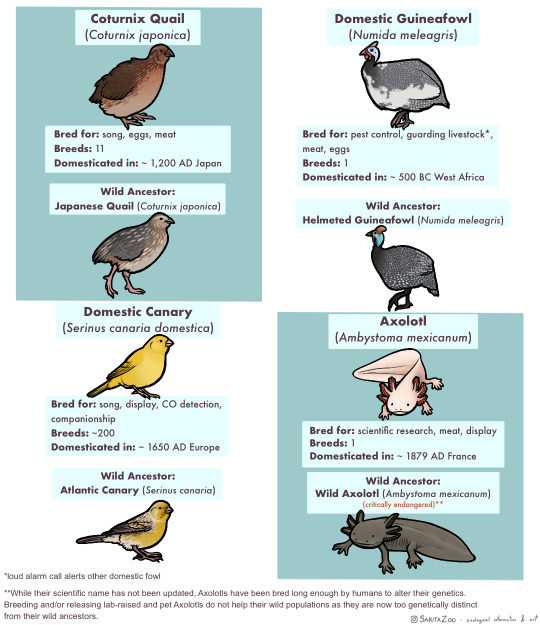
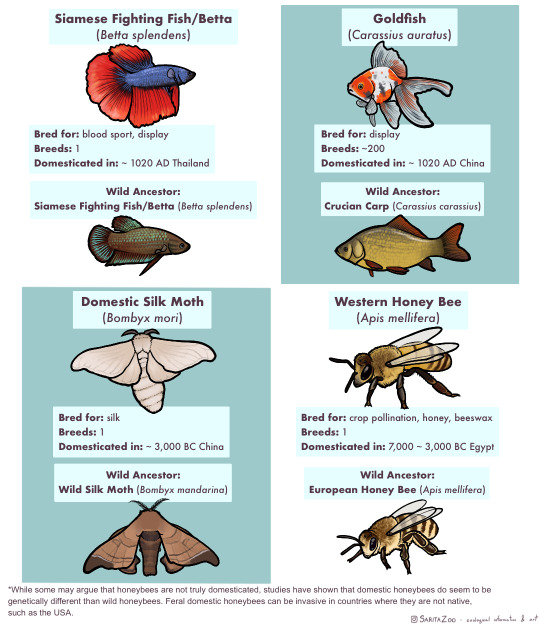

Phew. This one took, uh… a bit longer than expected due to other projects both irl and art-wise, but it’s finally here. The long-awaited domestic animal infographic! Unfortunately, I didn’t have enough space to cover every single domestic animal (I’m so sorry, reindeer and koi, my beloveds) but I tried to include as many of the “major ones” as possible.
I made this chart in response to a lot of the misunderstandings I hear concerning domestic animals, so I hope it’s helpful!
Further information I didn’t have any room to add or expand on:
🐈 “Breed” and “species” are not synonyms! Breeds are specific to domesticated animals. A Bengal Tiger is a species of tiger. A Siamese is a breed of domestic cat.
🐀 Different colors are also not what makes a breed. A breed is determined by having genetics that are unique to that breed. So a “bluenose pitbull” is not a different breed from a “rednose pitbull”, but an American Pitbull Terrier is a different breed from an American Bully! Animals that have been domesticated for longer tend to have more seperate breeds as these differing genetics have had time to develop.
🐕 It takes hundreds of generations for an animal to become domesticated. While the “domesticated fox experiment” had interesting results, there were not enough generations involved for the foxes to become truly domesticated and their differences from wild foxes were more due to epigenetics (heritable traits that do not change the DNA sequence but rather activate or deactivate parts of it; owed to the specific circumstances of its parents’ behavior and environment.)
🐎 Wild animals that are raised in human care are not domesticated, but they can be considered “tamed.” This means that they still have all their wild instincts, but are less inclined to attack or be frightened of humans. A wild animal that lives in the wild but near human settlements and is less afraid of humans is considered “habituated.” Tamed and habituated animals are not any less dangerous than wild animals, and should still be treated with the same respect. Foxes, otters, raccoons, servals, caracals, bush babies, opossums, owls, monkeys, alligators, and other wild animals can be tamed or habituated, but they have not undergone hundreds of generations of domestication, so they are not domesticated animals.
🐄 Also, as seen above, these animals have all been domesticated for a reason, be it food, transport, pest control, or otherwise, at a time when less practical options existed. There is no benefit to domesticating other species in the modern day, so if you’ve got a hankering for keeping a wild animal as a pet, instead try to find the domestic equivalent of that wild animal! There are several dog breeds that look and behave like wolves or foxes, pigeons and chickens can make great pet birds and have hundreds of colorful fancy breeds, rats can be just as intelligent and social as a small monkey (and less expensive and dangerous to boot,) and ferrets are pretty darn close to minks and otters! There’s no need to keep a wolf in a house when our ancestors have already spent 20,000+ years to make them house-compatible.
🐖 This was stated in the infographic, but I feel like I must again reiterate that domestic animals do not belong in the wild, and often become invasive when feral. Their genetics have been specifically altered in such a way that they depend on humans for optimal health. We are their habitat. This is why you only really see feral pigeons in cities, and feral cats around settlements. They are specifically adapted to live with humans, so they stay even when unwanted. However, this does not mean they should live in a way that doesn’t put their health and comfort as a top priority! If we are their world, it is our duty to make it as good as possible. Please research any pet you get before bringing them home!
39K notes
·
View notes
Text
21K notes
·
View notes
Note
Hi! My fiancee wants go know if trained seals (like balancing a ball, etc) are ethical. I was talking about animal enrichment and how most "tricks" for undomesticated creatures are actually for vet checks and health monitoring, which doesn't seem to apply for seals. Can seals and similar performer animals be taught in a cruelty free and ethical way? Or are animal shows a sign of a bad facility? (Sorry if you've covered this; I searched but didn't find an answer.)
It’s a good question!
My stance is this: as long as you are training a behavior using positive techniques and it is not physically injurious to the animals, in isolation, it is ethical to train. Training is an important type of mental stimulation, as is novelty. For a lot of animals, training sessions are very high value because they’re challenging and engaging. After a point, there are only so many husbandry behaviors you can train - but as a trainer, you’ve still got an animal that you need to find a way to keep interested. Silly or “trick” behaviors are really important for a couple reasons. A lot of times what looks like ‘”tricks” are also pieces of natural behaviors put on cue, which can encourage an animal to engage in species-typical actions. Even if they’re totally silly though, like balancing a ball, unique and novel behaviors challenge the animals to try new things and think outside of the box in order to be successful. Some of behaviors (like flipper stands) encourage animals to expend a lot of energy or stretch or strengthen certain muscles, which helps keep them healthy.
Where the discussion of this tends to get complicated is when people consider the layer of why the behavior is being trained. There’s been a major shift in sentiment in the US lately that using animals for entertainment is wrong, and with that the reverse has ended up being demonized as well: if we find an animal doing something on cue inherently entertaining, the messaging says, it must be wrong to ask the animal to do it. That just isn’t real. As long as we assume that all training is positive and all of the animal’s engagement is voluntary, behaviors need to be considered differently from their contexts. For instance: asking elephants to step up onto an object or balance a certain way or stretch is something the public tends to think is entirely okay when it’s represented as part of a behavioral husbandry program in the zoo, but the exact same behaviors in a circus ring is something that a lot of people think is a lot less appropriate. The fact that the elephants learned those behaviors isn’t what is making people decide if it’s ethical or not - it’s in the context in which they’re being asked to do those behaviors.
What happened to get us here is that zoos and other animal management entities have long defended the majority of their training against criticism by remarking on the necessity of training for husbandry behaviors, and by emphasizing the welfare benefits of voluntary medical participation. In doing so, they didn’t emphasize the inherent value of other types of training. As the conversation in the US shifted to be more and more anti-entertainment, groups more on the animal rights side of the debate decided they were okay with animals being asked to engage in necessary training, but “none of that stuff that’s just to entertain people.” (Think about how often sanctuaries say “we don’t train our animals to do tricks because we don’t exploit our animals here.”)
A lot of that shift also has to do with the marketing of “wild purity” to the public. A lot of advocacy groups pushed this idea that wild animals should only ever act like wild animals (mostly in regards to their anti-circus work), which frames an animal doing anything that’s not obviously a natural behavior as not just bad, but inherently wrong. Therefore, teaching an animal a behavior that’s not natural - especially if they were doing the behavior in some context that entertained humans - got framed as inherently insulting and demeaning to the animal. I have a lot of feelings about the roots of this cultural trend, where we assume that a wild animal that is affiliative with humans or does what they ask is somehow “lesser” than their “pure” wild counterparts, but that’s a much longer post. Suffice to say, the exotic animal industry dealt with that pressure by making sure to message that any behavior that might look fun or silly has inherent value that just isn’t obvious - they generally made very sure to have an alternate reason for training any behavior, to avoid accusations of devaluing their charges by using them in ways “nature didn’t intend” and for “human entertainment.”
What’s generally not said - and what I think should be said more, because it leads to exactly your question - is that giving animals the option to learn novel behaviors has a lot of inherent value no matter what the context. If she’s not comfortable with the context in which a seal is being asked to balance a ball on it’s nose, that’s entirely her prerogative - but it’s doesn’t mean that teaching the seal to do that behavior in the first place is wrong or bad.
2K notes
·
View notes
Text



🐱 Domestic Longhair
📸 nuh_cheema
🎨 Black Ticked Tortoiseshell Tabby
186 notes
·
View notes
Text



My grandma has such sweet barn cats. Augh. They start purring when you pet them! They want to be held!! They’re cuddlier than my cats!!
#well. Genny-O (generic orange cat) isn’t grandma’s#he belongs to the neighbour but likes my grandma’s barn better so he moved in#anyways I’m missing my boys#glad to have cats around while I’m visiting the fam this week ❤️😔
65 notes
·
View notes
Text
I’m glad I usually go to a pet store that doesn’t sell animals bc I s2g every time I see a sad little beta fish in a cup I start doing the mental math 👀
#I can’t get a fish#houseplants are a struggle I can’t manage a tank#but at the same time#👀#I love a good fish#and they look so sad
39 notes
·
View notes



